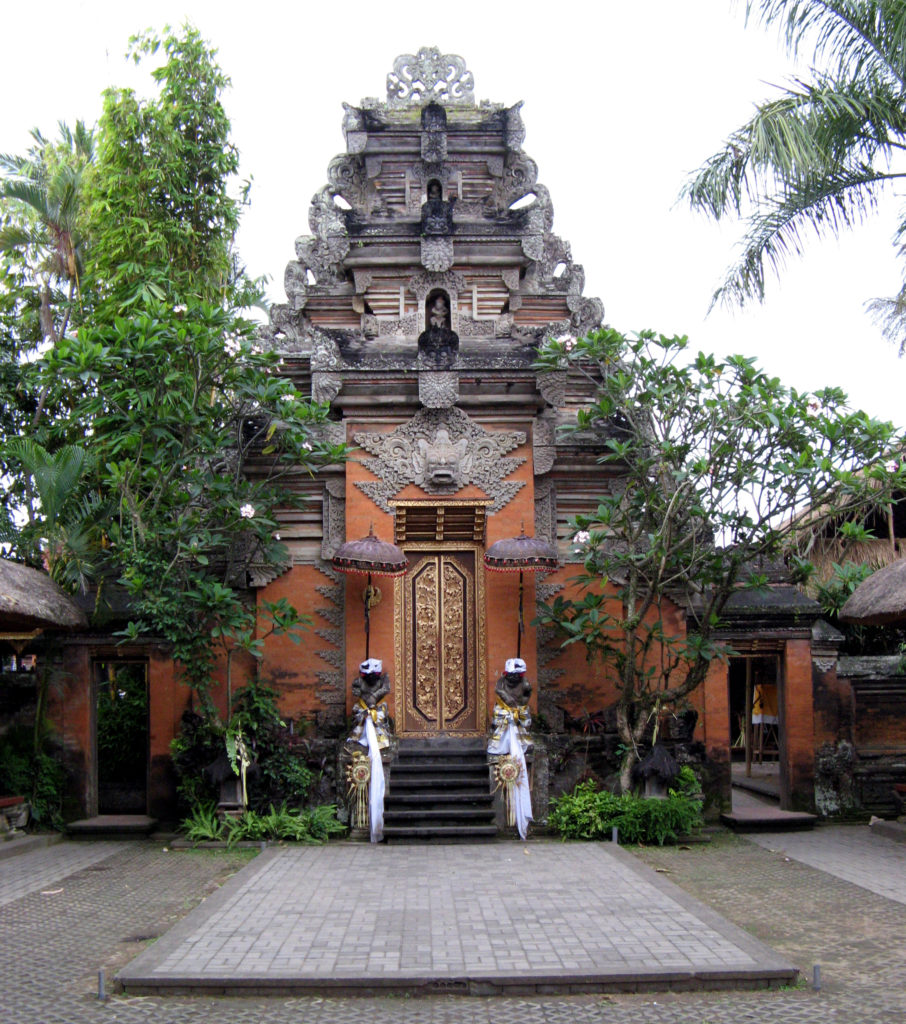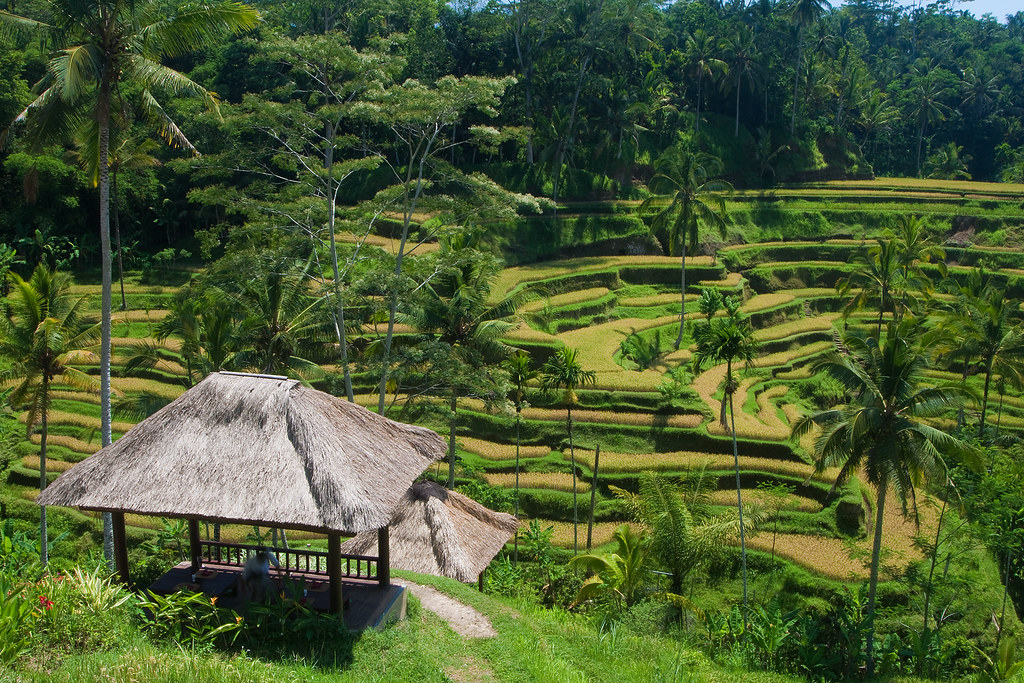Located about an hour’s drive from the frenetic capital, Denpasar, Ubud is surrounded by charming villages and viridescent paddy fields – the perfect place for relaxation and rejuvenation.
Ubud offers a different perspective of Bali, with an emphasis on living in harmony with nature and pursuing balance, all of which can be experienced even on a short trip here.
Visit a royal palace
Puri Saren Agung is the palace of Ubud’s royal family and one of its most prominent landmarks.
Built during the reign of Tjokorda Putu Kandel (1800-1823), this well-preserved structure amid a foliage-shaded garden is one of the showcases of traditional Balinese architecture.
 Still occupied by descendants of the royal family, a section of the palace is open to visitors.
Still occupied by descendants of the royal family, a section of the palace is open to visitors.
And to preserve and promote Balinese culture, public performances of traditional gamelan music and dance are also held here regularly.
Enter a sacred forest
Ensconced in the village of Padangtegal is Monkey Forest, a 12.5-hectare nature reserve and temple complex that is home to a colony of over 300 long-tailed macaques.
Set against a serene backdrop of ancient banyan trees and more than 100 species of flora are a trio of centuries-old Hindu temples that still serve the local community.
The main temple, Pura Dalem Agung Padangtegal, honours Shiva, while Gangga, the goddess of purification and forgiveness, is worshipped at Pura Beji.
 A third temple, Pura Prajapati, is where cremation rites are held.
A third temple, Pura Prajapati, is where cremation rites are held.
As with all Hindu temples in Bali, dress codes and cultural mores apply, so be sure to abide by these if you’re planning to visit or offer prayers.
The forest park is a wonderful place to while away an afternoon and catch its cheeky residents swinging through the canopies, but do keep your valuables secure – the macaques are known to scamper off with a bag or two.
Walk among cascading paddies
Ubud is famed for its verdant landscape of lush forests and emerald rice fields that stretch as far as the eye can see.
The most spectacular of these is just a 20-minute drive north of central Ubud, at the Tegallalang rice terraces that cascade down the hillside.
 Tegallalang is one of three rice terraces in Ubud (the others are Pejeng and Campuhan), and is well-worth your visit to understand the symbolism of rice to the locals, who consider the grain a gift from the gods.
Tegallalang is one of three rice terraces in Ubud (the others are Pejeng and Campuhan), and is well-worth your visit to understand the symbolism of rice to the locals, who consider the grain a gift from the gods.
Far from being just aesthetically pleasing, these rice terraces are a manifestation of the island’s traditional subak (water cooperative) irrigation system, based on knowledge passed down by the 8th century sage, Rsi Markandeya.
At Tegallalang, you can explore the rice fields and watch as farmers, in their woven rattan sun hats, sow or harvest rice. And when you’re done, head to one of the hillside cafes for drinks with a view.
Discover ancient Balinese healing arts
Bali’s ancient healing arts are closely linked to Balinese Hinduism and the concept of balance.
The island has over 8,000 balian or shamans who specialise in everything from rejuvenating massages to ridding evil spirits, and treatments include ritual cleansing ceremonies and the prescription of herbal potions to restore well-being.
Among the most popular balian in Ubud are skilled palm and aura reader Agus Sihman, and Kadek Sutarna, who prescribe spirit-healing exercises and concoctions.
According to airasia.com













